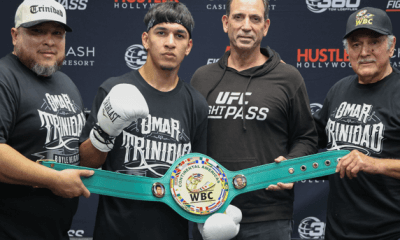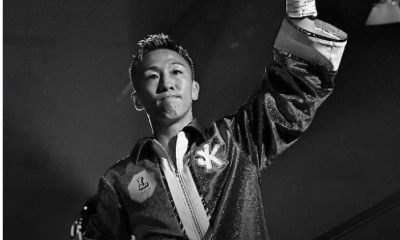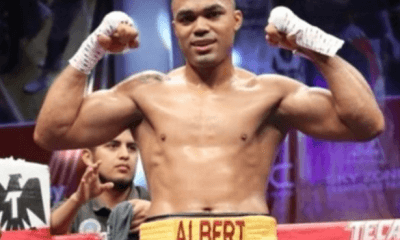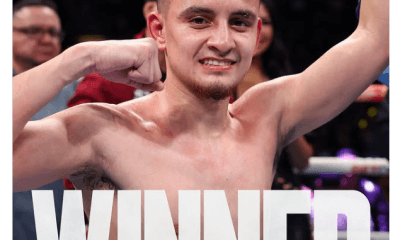Featured Articles
The Hauser Report — Slap Fighting: A Bad Idea Whose Time Shouldn’t Come
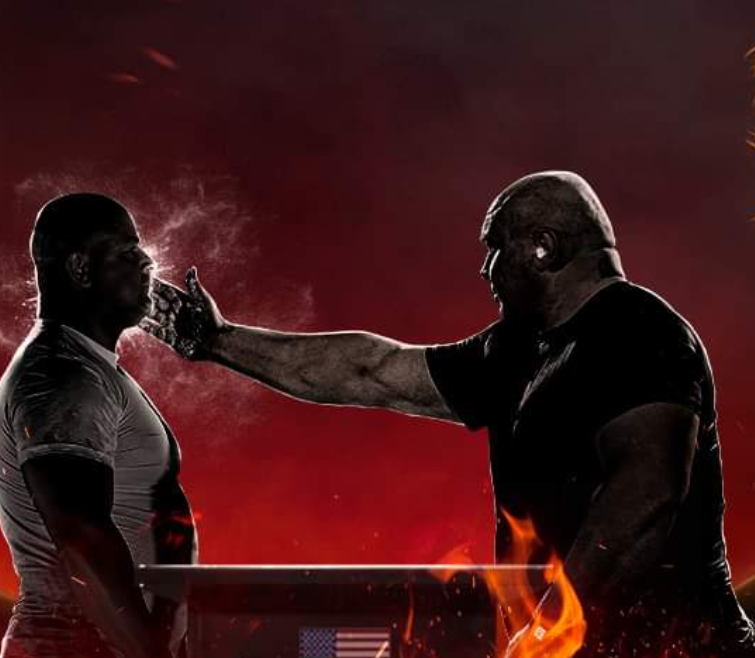
On October 18, 2022, the Nevada State Athletic Commission approved a proposal to categorize slap fighting as unarmed combat that will be allowed when conducted pursuant to rules and regulations promulgated by the State of Nevada and overseen by the commission.
UFC president Dana White, Fertitta Capital (an investment firm owned by former UFC owners Lorenzo and Frank Fertitta), Endeavor (which bought UFC in 2016), UFC chief business officer Hunter Campbell, TV producer Craig Piligan (“The Ultimate Fighter”), and Zeke Capital (a hedge fund) are the primary owners of an entity called Power Slap League which will be the most obvious beneficiary of the ruling.
During the commission meeting, NSAC chairman Stephen Cloobeck said that a video prepared by Power Slap League personnel that he watched was “highly entertaining” and praised the involvement of “professionals who know what they’re doing.”
Now let’s get real.
MMA writer Ben Fowlkes recently called slap fighting “a nascent sport crawling out of the primordial ooze” and “the dumbest sport imaginable.”
“The concept of slap fighting,” Fowlkes elaborated, “is about as simple as it gets. Two people stand across from each other and take turns hitting each other in the face with an open hand until, one way or another, someone has had enough. It might be the only combat sport where any form of defense is expressly, explicitly banned.”
To repeat; there’s no defense. Competitors are not allowed to keep their guard up or move their head. They wait for the blow. How hard they can hit and how much punishment they can take determine who wins. Whoever knocks his opponent out emerges victorious. It’s brutal and it’s dangerous.
Last year, a Polish slap fighter named Artur “Waluś” Walczak died from brain injuries after being knocked out in a slap fight in Wrocław.
So why is the Nevada State Athletic Commission working with the Fertittas, Dana White, and their brethren to enable this venture?
“We already know the answer,” Fowlkes writes. “The answer is money. There’s simply no way you can get me to believe that White and the Fertittas and the rest of the gang saw a Belarussian slap fighting competition on YouTube and said to each other, ‘This is an important movement, and, for the sake of our legacies, we need to be a part of it.'”
Appearing before the Nevada State Athletic Commission on October 18, Hunter Campbell testified that slap fighting intends to follow “an identical template for what we have with UFC events,” and added, “We’ve spent the last year sort of beta-testing this in a controlled environment to really test and see sort of the dynamic of how this would function as an actual league and real sport. What we’ve found is that this is actually a skill sport; that the participants that are at a high level in this are skilled athletes. They train. They’re in good shape. They take it seriously.”
As reported by CombatSportsLaw.com, when asked about the NSAC’s decision to legitimize slap fighting, Nevada deputy attorney general Joel Bekker (who works with the commission) responded, “I can assure you that licensed doctors with knowledge and experience working with unarmed combat athletes were consulted with to assure that Slap Fighting, like all other regulated unarmed combat sports in Nevada, is conducted as safely as possible with the ultimate goal being the health and safety of all participants.”
The Sweet Science reached out to the Nevada Attorney General’s Office and asked which doctors Bekker was referring to in his statement and which doctors, if any, testified before the NSAC regarding slap fighting.
The Nevada Attorney General’s Office declined to answer the question other than to state that the doctor in question (apparently there was only one) “has been actively licensed in Nevada since the 1990s and worked for the NSAC in the past.” That sounds like the resume of a physician currently employed by UFC. Where are the independent medical observers?
One might also ask about the “beta testing in a controlled environment” that Campbell says Power Slap League (or its proxies) conducted. How many times were defenseless combatants hit in the head as part of the testing process? How many of these combatants were concussed? What other injuries did they suffer? How much of the testing process was recorded on video? How much of this video was destroyed? Did the commission ask to see the rest of the video or only the carefully edited “entertaining” video that the commission chair referenced?
Bekker further advised, “Slap fighting competitors are mandated to wear protective gear during their bouts including a tooth/gum shield and cotton ear padding . . . The scoring target area deliberately excludes the eyes, nose, chin, neck, and temple areas of the head and face. Strikes outside that area are considered Fouls . . . All competitions will have ‘Catchers’ or ‘Spotters’ behind the defensive competitor to ensure that struck competitors do not hit the ground hard, especially their heads.”
The cotton ear padding is supposed to help protect slap fighters against ruptured eardrums. Brain bleeds and the specter of chronic traumatic encephalopathy (CTE) are of greater concern.
I’m not an expert on slap fighting. But I’ve looked at the videos and I think it’s awful. The cardinal rule in combat sports is to protect yourself at all times. In boxing or MMA, if a fighter can’t defend himself or herself, the referee stops the fight. And the whole point of slap fighting is to hit someone in the head as hard as you can while he or she is not allowed to defend himself.
Dr. Nitin Sethi (a neurologist whose primary practice is affiliated with Weill Cornell Medicine) is chief medical officer for the New York State Athletic Commission. Putting slap fighting in perspective, Dr. Sethi states, “Concussions and acute traumatic brain injuries are common in combat sports. In boxing, every punch thrown at the head is thrown with the intention of winning by causing a knockout which is a concussive brain injury.”
“Subdural hematoma,” Dr. Sethi continues, “remains the most common cause of boxing-related mortality. Boxers, as you are painfully aware, have died in the ring or in the immediate aftermath of a bout. The ones who survive by undergoing a timely decompressive hemicraniectomy are left behind with devastating and lifelong neurological deficits. The far bigger burden and problem is that of chronic neurological injuries such as chronic traumatic encephalopathy. Unfortunately, this burden remains hidden and comes to medical attention long after the fighter has retired.”
Turning to slap fighting, Dr. Sethi explains, “Open-handed slaps delivered with such force to the opponents face frequently cause the person’s legs to buckle, at times suffer momentary – sometimes longer – loss of consciousness, and collapse to the floor. These are all concussive injuries of varying duration. The ‘athlete’ who is on the receiving end of the slap has no option available to him to defend himself. These ‘slaps’ will add up. In my professional opinion, those who partake in this ‘sport’ will also suffer the stigmata of chronic neurological injuries.”
Finally, Sethi adds, “I disagree with the argument that better medical supervision of this ‘sport’ shall make it safer. I am not sure what a physician is meant to supervise here other than being the overseer of concussive injuries occurring under his or her watch.”
Dr. Michael Schwartz (the driving force behind creation of the Association of Ringside Physicians) is equally pointed in his criticism.
“We’ve spent so many years trying to educate commissions and fighters about brain damage,” Dr. Schwartz says. “And now you have this. These guys get hit in the head. You’re inflicting a concussion without allowing the combatant to in any way protect himself. And then he gets hit in the head again. Every concussion is brain damage. The first concussion is damaging. And with second impact syndrome, the second concussion can be life-threatening. It’s insane.”
Nevada State Athletic Commission executive director Jeff Mullen supported the decision to enable slap fighting. To justify this position, Mullen says, “This sport needs to be regulated. And if we don’t regulate it, it will be taking place everywhere all over town without any kind of regulations, without any kind of safety standard. By regulating this, we can make sure that there’s doctors there, ambulances there, that the fighters have physicals, they have eye exams, they have MRIs and MRAs. And if we don’t regulate it, we’re going to have people competing right off a bar stool and it’s going to be a dangerous situation. I think, for the health and safety of our constituents, we have to do that.”
That’s nonsense.
Yes, slap fighting is easy to run as an outlaw sport. There’s no ring, just two combatants standing or sitting at a table. They don’t even need gloves. But if slap fighting goes mainstream, it will encourage more people – particularly young people – to emulate it. That will mean more slap fighting in casual settings such as school playgrounds and bars.
Maybe someone should seat the NSAC commissioners at a table. Let a 300-pound slap fighter whack each of them in the head. Then let’s see if the commissioners want to reconsider their vote.
Meanwhile, don’t call it “slap fighting.” That cosmeticizes the brutality. Call it what it is – “whack a defenseless person in the head as hard as you can to cause brain damage.”
Thomas Hauser’s email address is thomashauserwriter@gmail.com. His most recent book – In the Inner Sanctum: Behind the Scenes at Big Fights – was just published by the University of Arkansas Press. In 2004, the Boxing Writers Association of America honored Hauser with the Nat Fleischer Award for career excellence in boxing journalism. In 2019, Hauser was selected for boxing’s highest honor – induction into the International Boxing Hall of Fame.
To comment on this story in the Fight Forum CLICK HERE
-

 Featured Articles3 weeks ago
Featured Articles3 weeks agoThe Hauser Report: Zayas-Garcia, Pacquiao, Usyk, and the NYSAC
-

 Featured Articles2 weeks ago
Featured Articles2 weeks agoOscar Duarte and Regis Prograis Prevail on an Action-Packed Fight Card in Chicago
-

 Featured Articles1 week ago
Featured Articles1 week agoThe Hauser Report: Cinematic and Literary Notes
-

 Book Review4 days ago
Book Review4 days agoMark Kriegel’s New Book About Mike Tyson is a Must-Read
-
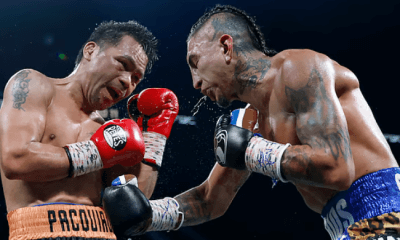
 Featured Articles4 weeks ago
Featured Articles4 weeks agoManny Pacquiao and Mario Barrios Fight to a Draw; Fundora stops Tim Tszyu
-
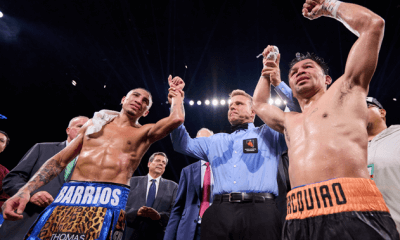
 Featured Articles4 weeks ago
Featured Articles4 weeks agoArne’s Almanac: Pacquiao-Barrios Redux
-

 Featured Articles3 weeks ago
Featured Articles3 weeks agoRemembering Dwight Muhammad Qawi (1953-2025) and his Triumphant Return to Prison
-
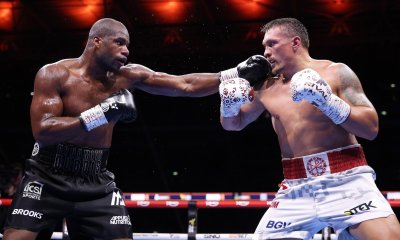
 Featured Articles4 weeks ago
Featured Articles4 weeks agoOleksandr Usyk Continues to Amaze; KOs Daniel Dubois in 5 One-Sided Rounds


